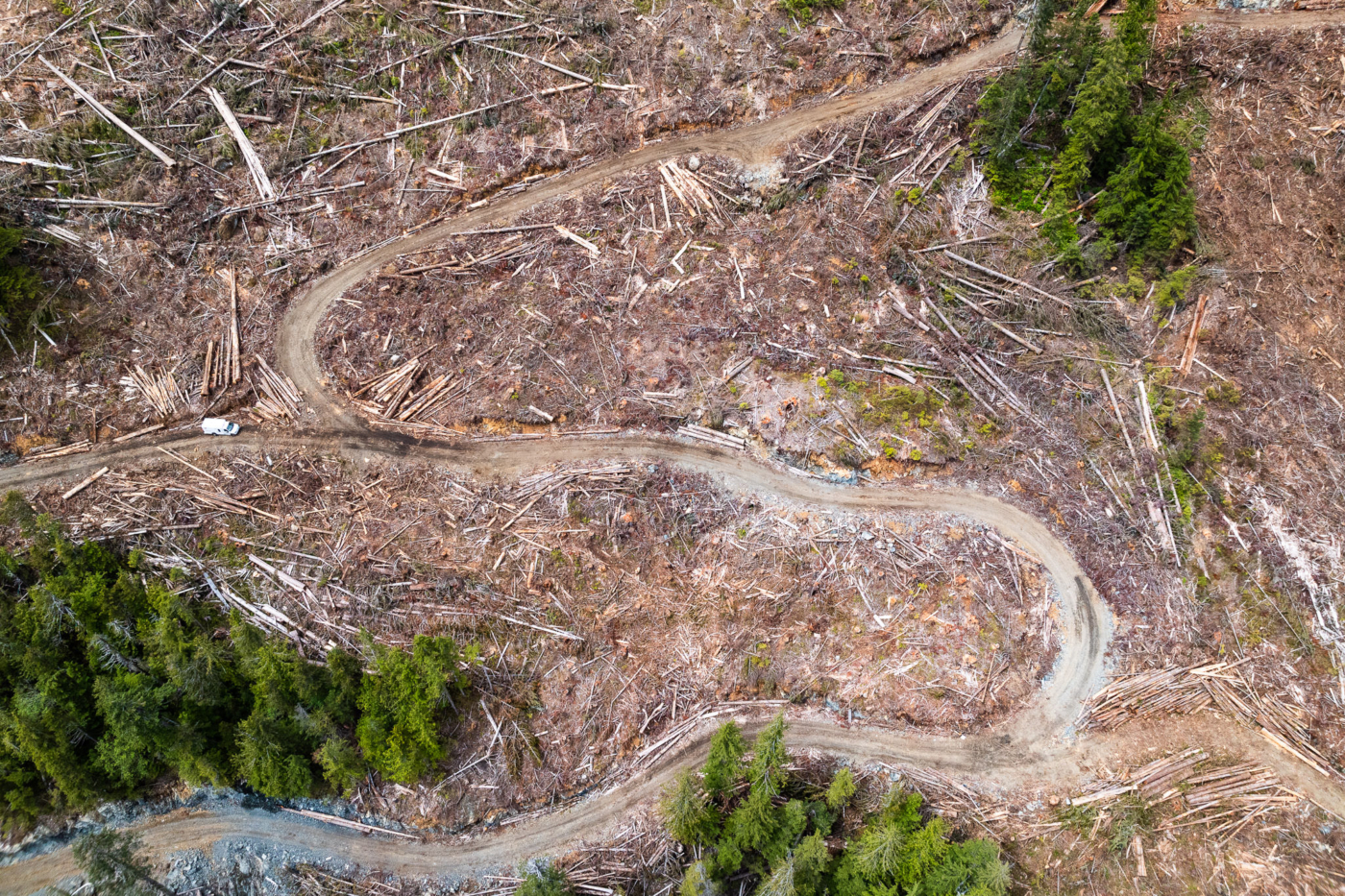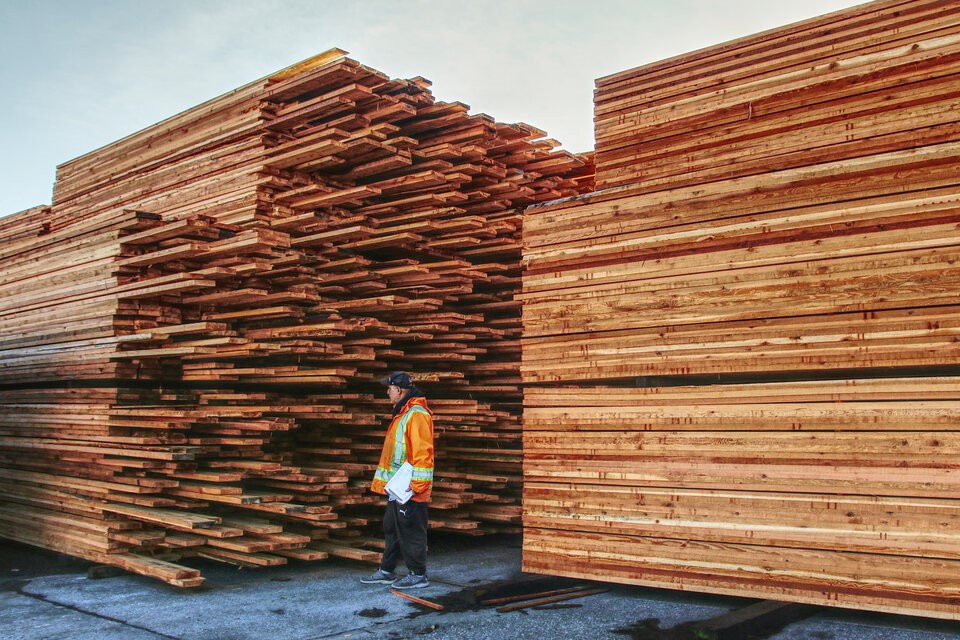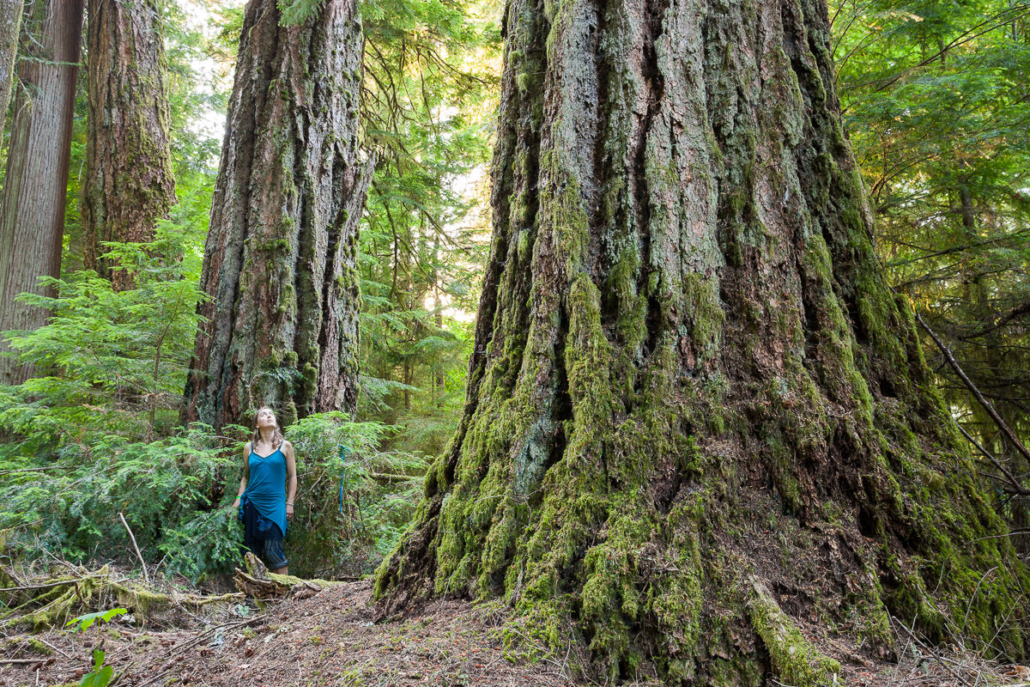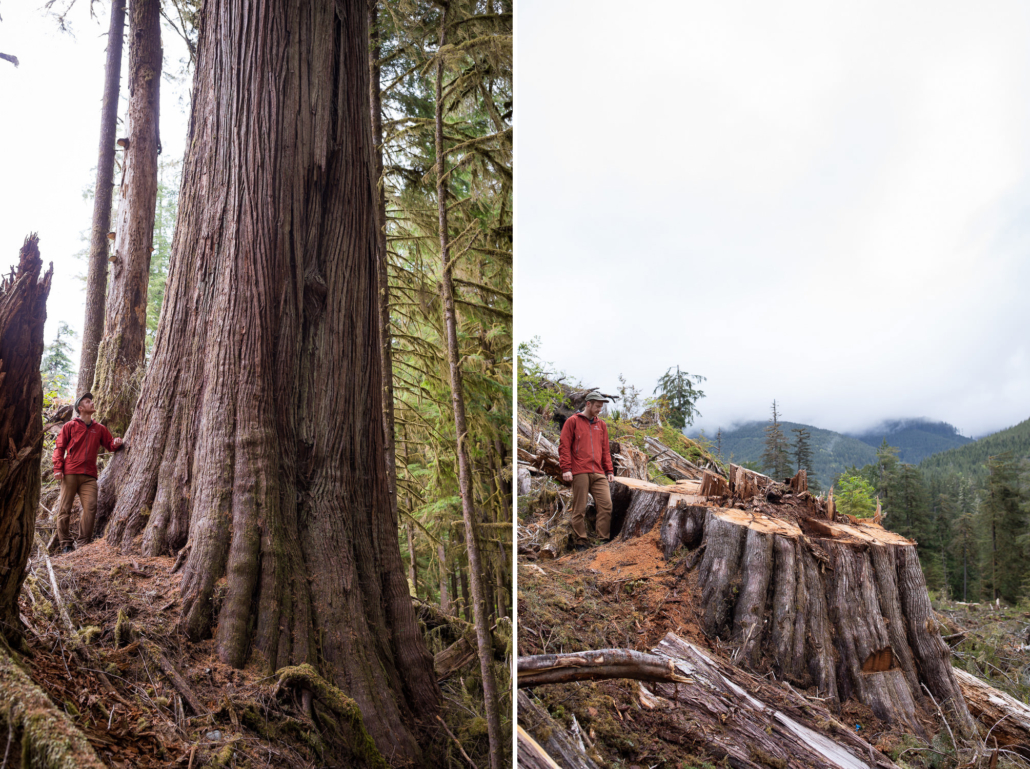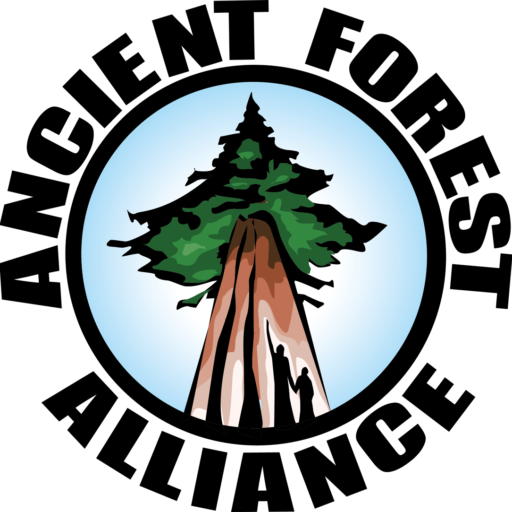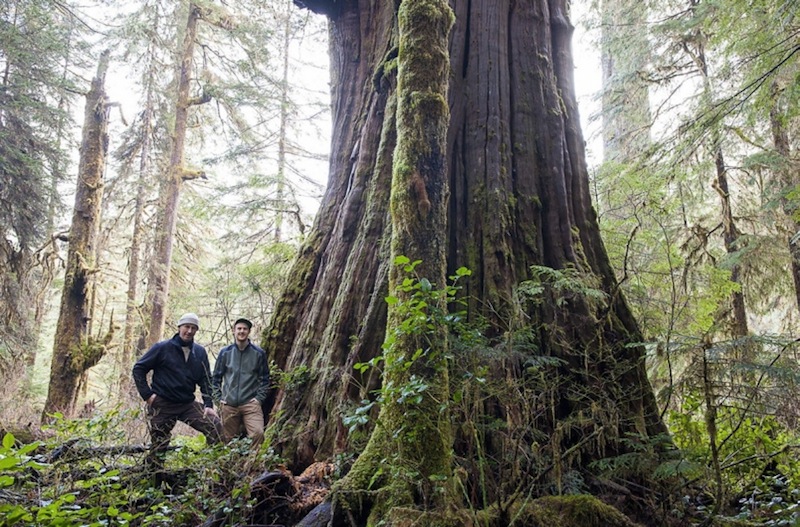 Jul 10 2016
Jul 10 2016New calls for a moratorium on old-growth logging
Here’s a new Focus magazine article by Briony Penn about Vancouver Island’s old-growth forests, featuring forest ecologist Dr. Andy MacKinnon, Port Renfrew Chamber of Commerce president Dan Hager, Jens Wieting of the Sierra Club, AFA, Ahousaht and Tofino councils, and the growing support among businesses, chambers of commerce, and municipal councils for protecting BC’s old-growth forests.
******
WHEN THE BC CHAMBER OF COMMERCE and the Association of Vancouver Island and Coastal Communities (AVICC) recently came out championing the protection of old-growth forests on Vancouver Island, it was hailed as a historic and tectonic shift by environmentalists. Yet it’s probably more accurately described in earthquake terms as “fault creep”—the “slow, more or less continuous movement occurring on faults due to ongoing tectonic deformation.”
Political and business associations have finally caught up with the economic reality, climate change, public attitudes, business opportunities, and scientific data—and not a moment too soon.
In typical island fashion, it takes a poster boy from elsewhere with home-spun prairie logic to signal that shift. Handsome Dan Hager, the head of the Port Renfrew Chamber and business owner of Handsome Dan’s Wild Coast Cottages, looked in his guest books one day and noticed that his guests were coming year round to visit old trees at the Avatar Grove. Since then, with just a handsome Saskatchewan smile and anecdotal stories of full beds and full-time staff, he’s managed to convince the entire BC Chamber of Commerce of the value of leaving old growth close to towns.
This likely amuses botanist and Metchosin Councillor Andy Mackinnon. His 30 years of collecting compelling scientific data on the value of old growth on Vancouver Island is not as “hot” on the current media radar, although he’s being effective in other ways. With his own moniker the “fun guy” (pun on fungi, his research specialty), Mackinnon has spread his own charismatic mycelia alongside Hager’s in the slow and continuous movement towards improving Vancouver Island land use planning.
Mackinnon, a forest researcher with the provincial government, has recently retired from public service and jumped into political life. He won a seat on Metchosin council in 2014 and has been looking for ways to get science back into policy and planning ever since. Mackinnon managed to get a resolution asking for a moratorium on the logging of old growth on Vancouver Island passed by his Metchosin Council, and then Colwood’s, this spring. That was subsequently endorsed at AVICC’s AGM in April. His advocacy was triggered by his frustrations as a government scientist. He says, “You felt you were gathering a lot of good information that wasn’t being incorporated into policy and management.” Mackinnon’s first priority was to stop the old-growth logging while Vancouver Island still had some left to save.
His resolution for a moratorium was borrowed from the Ahousat chiefs—also known as the Hawiih of Clayoquot Sound— who had announced their own moratorium on industrial logging of old-growth forests in October last year. It hasn’t gone unnoticed by Mackinnon that the Ahousat have been slowly, more or less continuously, suggesting to Western governments the values of old growth. Their data goes back several thousand years. Their resolution included a community “Land Use Visioning” process intended to protect a traditional way of life while diversifying livelihoods.
The mayor of Tofino shared this resolution with Mackinnon and he fashioned a similar moratorium for Metchosin with a request to the provincial government to revise the old Vancouver Island Land Use Plan. The resolution’s preamble states that old-growth forest is increasingly rare on Vancouver Island and has significant values as wildlife habitat, a tourism resource, a carbon sink and much more. It also noted that current plans on provincial Crown land call for logging the remaining old-growth forest outside of protected areas, Old-Growth Management Areas (OGMAs), and similar reserves, over the next 10-20 years.
Mackinnon is not new to the science of why it is important to protect old growth. He was on the scientific team that wrote the provincial Old Growth Strategy (OGS) starting in 1989. At the time, the OGS was cutting-edge policy. The 1992 report began with the acknowledgement that old-growth forests “represent a wide range of spiritual, ecological, economic and social values” and outlined the framework to plan for conserving old growth. It was the time of the “war in the woods”—from Clayoquot Sound to Carmanah—and logging still constituted the dominant industry in parts of northern Vancouver Island. The same year, the NDP created the Commission on Resources and Environment to provide independent land use recommendations to cabinet for Vancouver Island, and the OGS was folded into this new Vancouver Island Land Use Plan (VILUP) and the Forest Practices Code. (Clayoquot Sound was excluded from VILUP because it came under a separate scientific commission.)
According to Mackinnon, “those were exciting times with the opportunity to do broad land use planning and establish new protected areas.” Before 1992, only 6 percent of Vancouver Island had any protected status and what was protected was mostly rocks and ice at the top of mountains. By the end of the planning process in 2000, the protected areas reached 12 percent of Vancouver Island with a slightly better representation of diverse lowland ecosystems. That included some of the big, old trees in valley bottoms known as “productive lowland old-growth forests.” The VILUP decisions established the upper Carmanah Valley, the lower Walbran Valley, Tashish Kwoi and Brooks Nasparti Provincial Parks as large protected areas.
The target of protecting 12 percent of the land base had come from the international Bruntland Commission and its landmark report Our Common Future. The report called for doubling the area of protected areas globally—which, at that time, also sat around 6 percent.
Mackinnon supported the plan then because it at least doubled the protection and was achievable politically, but it fell short in many regards. Many scientists had recommended quadrupling the area protected to take in forest stand and ecosystem diversity, and climate change wasn’t being factored in yet. The compromise was partly addressed in a series of special management zones created to maintain areas of old growth and high biodiversity within forest tenures on Crown land.
In 2001, with a change in provincial government from NDP to Liberal, the Old Growth Strategy and VILUP were sent to the shredders, special management zones were cancelled, and the Forest Practices Code was gutted. Since then, apart from a handful of tiny isolated groves, like Avatar Grove, being designated OGMAs or Land Use Objective areas, no ancient forests have been set aside in protected areas on Vancouver Island.
In the absence of any provincial leadership on island old growth, the Sierra Club has taken the lead role in mapping island forests. Mackinnon says, “When people asked my ministry how much old growth there was left, I would have to say: ‘Go talk to the Sierra Club.’” Jens Wieting of the Sierra Club of British Columbia notes that, as of 2012, less than 10 percent of the productive lowland old-growth forests remain. These are the forests that businesses like Handsome Dan’s benefit from, not the older, scrubby trees in the mountain tops that the provincial government still includes in their tally of old growth.
According to Wieting, the state of old growth on Vancouver Island is now an ecological emergency. Of that 10 percent that remains, only 4 percent has been set aside in parks or OGMAs and 6 percent is up for grabs. The Sierra Club’s recent Google Map press release visually shows how that remaining unprotected old growth is at risk.
This situation has brought a return of the wars in the woods, with conflicts over Walbran, Klaskish and East Creek. The battle is being led by the Ancient Forest Alliance, Western Canada Wilderness Committee and others. These last watersheds of remaining unprotected old-growth lowland forest are where the greatest value are for all stakeholders. The stakes are even higher with an increased understanding of the value of these forests for sequestering carbon.
Sierra’s data shows around 9400 hectares of Island old growth being logged annually and 17,000 hectares of second growth, some of it highly endangered ecosystems. Second-growth forests eventually become old-growth forests so we need to pay attention to these as well. Only saving old-growth forests is like only looking after elders and not nurturing the young. For forest ecologists, this is a compelling rationale for reopening the Vancouver Island Land Use Plan and reconsidering the mix of different forests and age classes of stands. This would entail planning for future reserves of old growth in forest types where there is hardly any old growth left, like the Douglas-fir forests of Vancouver Island where old growth has been reduced to 1 percent of the remaining stand.
Wieting’s argument is that “with every new clearcut, more biodiversity of the original ecosystem disappears.” That’s the ecological argument for a new target of quadrupling protected areas—nature needs half. But what about the economic argument?
The 1992 VILUP included a careful economic analysis with projections to 2012. What is most interesting is how accurate those projections were. They predicted continuing declines in the resource sectors and continuing increases in importance of tourism and other service industries like high tech and filmmaking, light manufacturing and pension and investment incomes. The plan states, “These shifts in economic structure will be reinforced by the in-migration of retirees to the Island, the aging of the resident population, increasing demand for and scarcity of wilderness recreation opportunities, technological change, and resource depletion.”
According to the VILUP, back in 1992 forestry and logging provided 10,565 jobs (3.6 percent) on Vancouver Island. By 2012, StatsCan numbers show, that had declined to 4700. Pulp and paper mills employed 12,900 people in 1992, but by 2012 that had fallen to one-half of that.
Compare that to 4800 jobs in the “information and cultural industries,” 9800 in the “arts, entertainment and recreation industries” and 5800 in the mysterious-sounding “personal and laundry services.” The largest employers—by far—on Vancouver Island are in the service industries with 20,000 to 50,000-plus jobs, per sector, in health, education, professional services, high tech, trade and tourism (accommodation and food services). Even the recent Vancouver Island State of the Economy report by the Vancouver Island Economic Alliance, in a curiously conservative analysis, points out the only fast growth areas are in the professional, scientific and high tech sectors—the people who fill up Handsome Dan’s Wild Coast Cottages.
The age-old problem for northern Vancouver Island rural communities of boom and bust resource-based economies was pinpointed accurately in the 1992 plan, with various recommendations for diversification.
In the ensuing years, though, there was minimal action taken to diversifiy. There was little public investment in a number of critical areas: infrastructure for making value-added wood products, transportation systems, an old-growth strategy, marketing of tourism to these areas, and creating value for ecosystem services. The BC Liberals weren’t, apparently, paying heed to the shifting economic landscape. New Zealand, with roughly comparable economic forecasts, land base and population, looked at its data back then and brought in a moratorium on old-growth logging while investing heavily in ecotourism infrastructure and marketing. Total tourism expenditure today in New Zealand is $29.8 billion, increasing at 10 percent per year. Vancouver Island tourism generates $2.2 billion annually.
Better late than never, Mackinnon’s resolution will now go to the Union of BC Municipalities AGM in September. So far the provincial government hasn’t responded to his request for a meeting. With Hager working the business community on a modified resolution specifically referring to old growth close to settlements, both Mackinnon and Hager argue that it will be hard for the provincial government to ignore both local governments and the business sector.
Once a moratorium is in place, Mackinnon would like to see innovative planning—with a foundation based on scientific principles—adapted for Vancouver Island. He points to the land use plans for Clayoquot Sound and the Great Bear Rainforest, both of which he participated in and which were spearheaded by First Nations. The Great Bear Rainforest Agreements in particular incorporated First Nations concerns, economic realities that included real conservation financing, and carbon credit projects for First Nations.
As Jens Wieting suggests, “We have a lot to learn from what went on in both these regions—and fast, because climate change means that we have even less time to save rainforest as we know it.”
As for Handsome Dan, he says, “I’m no treehugger and I don’t need to rely on any science. I just see the logic because the economics are black and white. The trees left standing are good for my business.” Hardly earthshaking, but a welcome tectonic nudge to an island that has so much natural capital to offer its inhabitants and the world.
[Original article no longer available]

